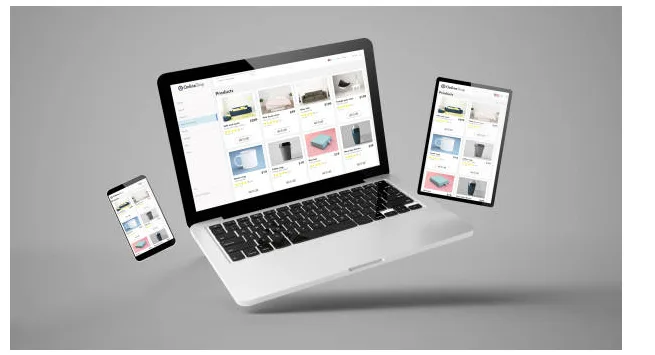Optimize Care with ims integration
Healthcare practices need technology that connects every part of their operations, from scheduling and billing to patient communication and telehealth. That is why ims integration has become a strategic priority for practices using IMS (Intelligent Medical Software). By linking IMS with modern communication and virtual care solutions, practices gain a unified, HIPAA-compliant workflow that includes intake, reminders, secure messaging, and video consultations. The result is an efficient, error-resistant system that allows providers to focus on care instead of administration.
At ims integration, you can see how this connection helps practices improve efficiency, meet compliance standards, and deliver the type of experience today’s patients demand. Below is a detailed overview of why integration matters and how it can transform clinical and administrative operations.
Why IMS Users Need Integration
IMS is widely recognized as a versatile electronic health record and practice management system. It offers charting, billing, scheduling, and reporting tools that support daily operations. Yet while IMS is strong in recordkeeping and administration, many practices find themselves supplementing it with outside solutions for patient communication, intake, or telehealth. Patients expect reminders by text, quick confirmations, and access to digital forms before arriving at the office. They also expect secure, user-friendly video visits when an in-person visit isn’t necessary.
Without integration, staff often re-enter data across separate systems, leading to inefficiencies and a higher chance of mistakes. They spend valuable time on manual tasks, while patients deal with disjointed experiences. ims integration closes this gap, connecting IMS directly with engagement tools to create a single, streamlined workflow.
How ims integration Improves Practice Operations
The most immediate benefit is synchronization. When updates occur in IMS—such as demographic details, scheduling changes, or new billing information—they are reflected automatically in the communication system. At the same time, patient responses, form submissions, or telehealth visits are logged back into IMS without extra work. This ensures accuracy and reduces administrative effort.
Communication also becomes more reliable and patient-friendly. Instead of phone calls or emails, patients receive secure text reminders. They confirm or reschedule instantly, and schedules update automatically in IMS. This consistency reduces missed appointments, improves attendance, and lightens the load on front-desk staff.
Intake transforms into a modern digital process. Forms are sent electronically before appointments, and patients complete them from home on a phone or computer. Medical histories, insurance details, and consent forms flow directly into IMS. Patients spend less time waiting, and staff avoid scanning or typing information by hand.
Telehealth integration adds convenience for both providers and patients. Secure links are sent directly to patients, who join consultations without extra downloads. Providers conduct video visits, document notes, and connect everything back to IMS automatically. This feature is especially valuable for follow-ups, chronic condition monitoring, or consultations where in-person visits aren’t required.
Outreach campaigns and reputation management are strengthened too. Practices can send updates or preventive reminders to patient groups drawn from IMS data. Automated review requests after visits help practices collect feedback and build stronger online reputations. Because campaigns are powered by accurate patient information, they reach the right audience with relevant messages.
Implementation and Onboarding
One of the best aspects of ims integration is the speed of deployment. While some IT projects stretch over months, integration with IMS can often be completed in under 48 hours. Specialists handle the setup, ensuring that staff don’t face unnecessary technical hurdles.
During onboarding, practices configure templates for reminders, design intake forms, and align workflows with their daily operations. Because the interface is intuitive, training typically takes only a few hours. Most teams feel confident using the system quickly and begin seeing results within the first week.
Compliance is built into the process. All communication is encrypted and stored securely, with a HIPAA Business Associate Agreement ensuring legal and regulatory protection. Practices can adopt modern communication tools without risking privacy or compliance violations.
Real-World Scenarios
A multi-provider clinic that relied heavily on phone calls struggled with no-shows and administrative overload. After enabling ims integration, reminders were automated, confirmations handled by text, and scheduling updates synced instantly with IMS. The clinic reduced no-shows dramatically and freed staff from hours of phone work each week.
Another practice faced slow intake procedures. Patients filled out forms on paper, and staff re-entered them later, creating bottlenecks and errors. Integration allowed the clinic to send digital forms in advance. The data appeared directly in IMS, reducing waiting room times and improving accuracy.
Telehealth became a lifeline for a specialty clinic serving patients across multiple regions. Previously, providers had to use separate software for video visits and then manually transfer notes into IMS. Integration allowed them to launch visits through secure links and have everything tied back to the EHR automatically. Providers saved time, and patients experienced a smoother, more professional process.
Measuring Results
Practices that adopt ims integration usually see measurable improvements within weeks. No-show rates decline, staff save significant time, and intake efficiency improves. Patients report higher satisfaction because communication feels modern and simple. Telehealth adoption expands service options, outreach campaigns achieve stronger engagement, and online reviews improve steadily. These outcomes create a clear return on investment and support long-term growth.
Best Practices for Maximizing Success
To get the most from ims integration, many practices begin with a phased rollout. By starting with reminders or intake forms, they can test workflows and make adjustments before expanding to full adoption. Gathering feedback from patients and staff ensures that processes align with real-world needs. Monitoring usage over time highlights which features deliver the greatest value. Because integration is flexible, it can evolve as the practice grows, ensuring lasting benefits.
Why ims integration Is the Right Choice
IMS already provides a strong foundation for EHR and practice management. Integration builds on that foundation by connecting it with communication, intake, telehealth, and outreach tools. This creates a unified system where staff work more efficiently, patients receive better service, and compliance is always maintained. Whether for a small clinic or a large multi-location group, ims integration scales to fit organizational needs and delivers consistent results.
Conclusion
Modern healthcare demands connected systems that reduce inefficiency and strengthen patient relationships. With ims integration, practices unify IMS with digital communication, intake, reminders, and telehealth in a HIPAA-compliant environment. The integration eliminates silos, reduces manual work, and creates a smoother patient journey, helping clinics stay competitive and patient-focused. HIPAA Privacy Rule – HHS.gov






